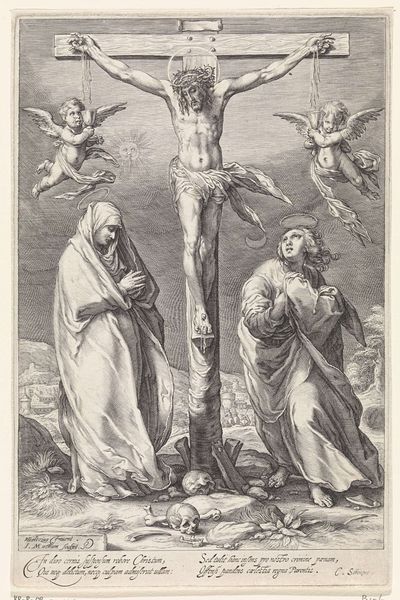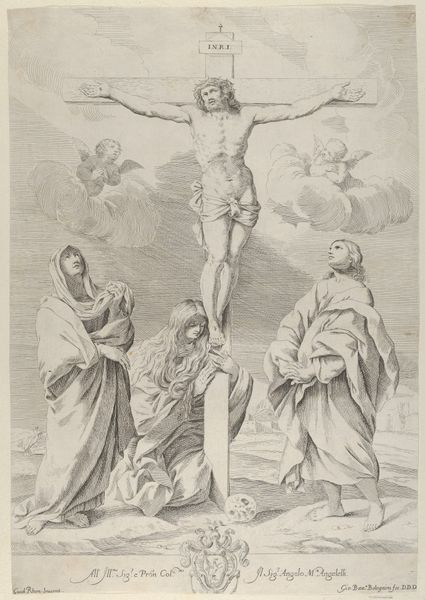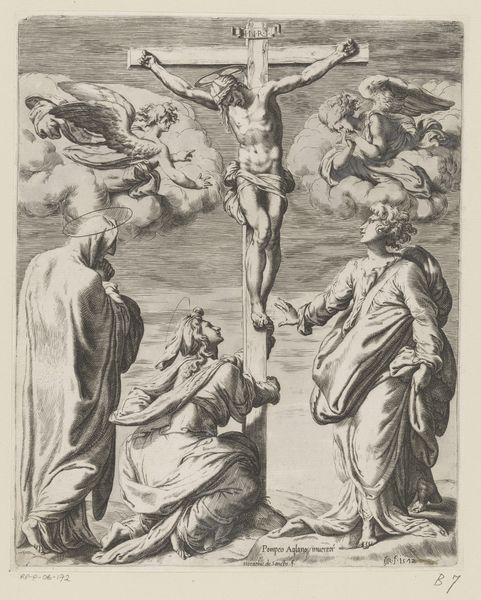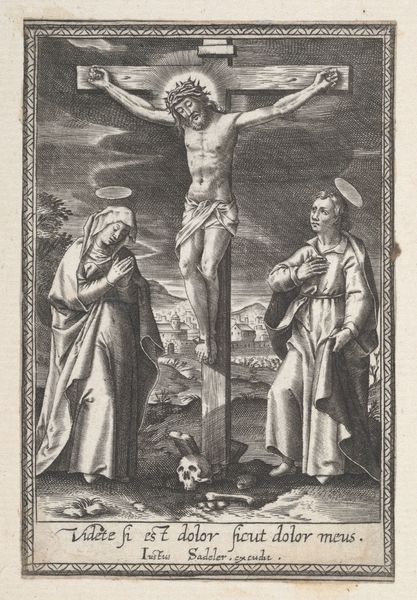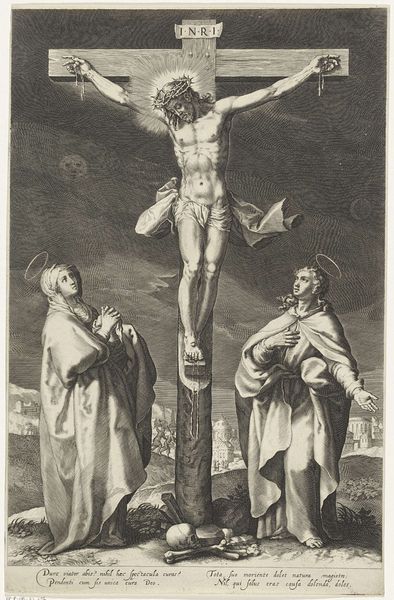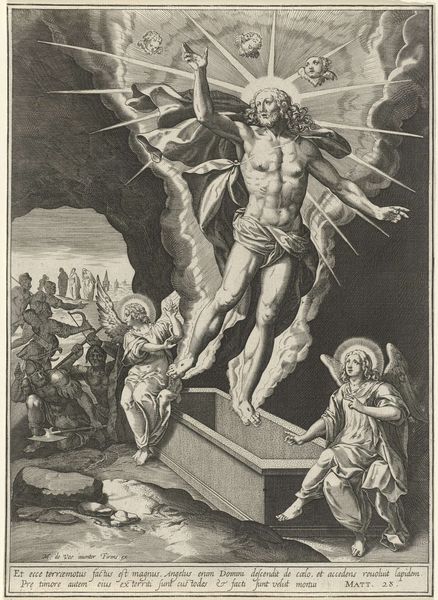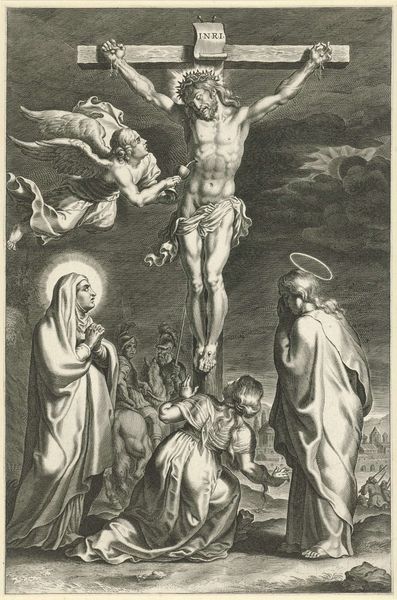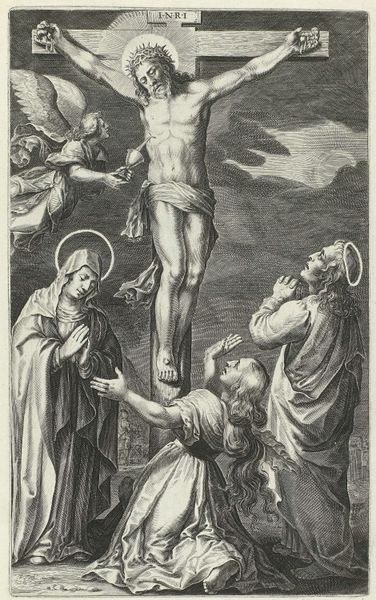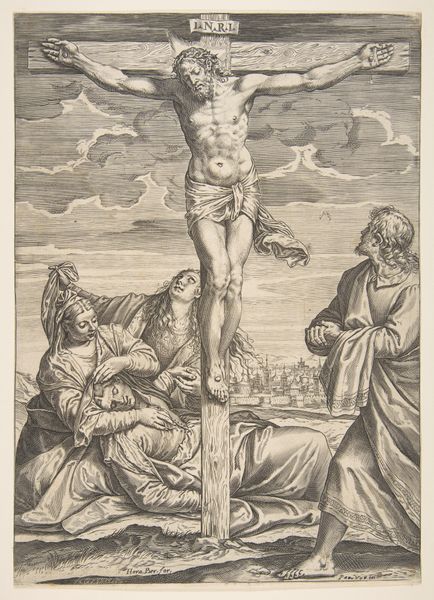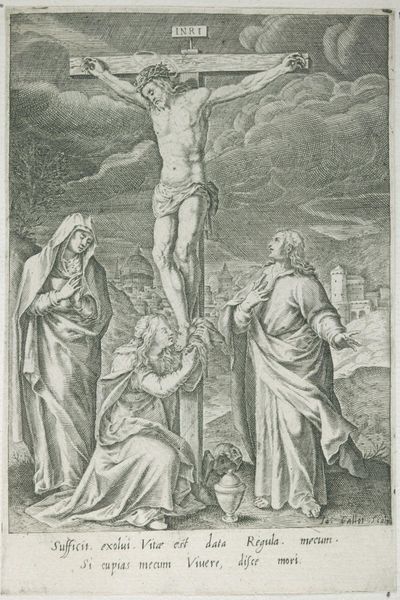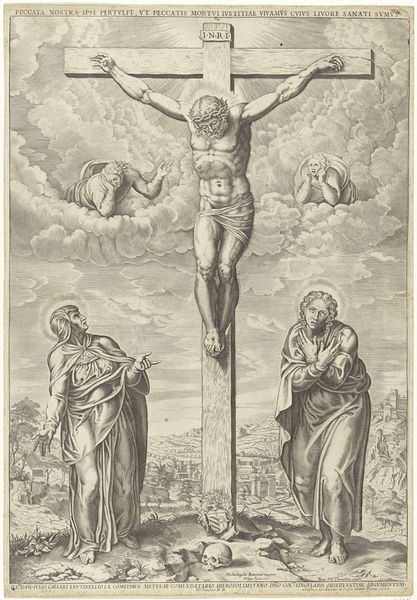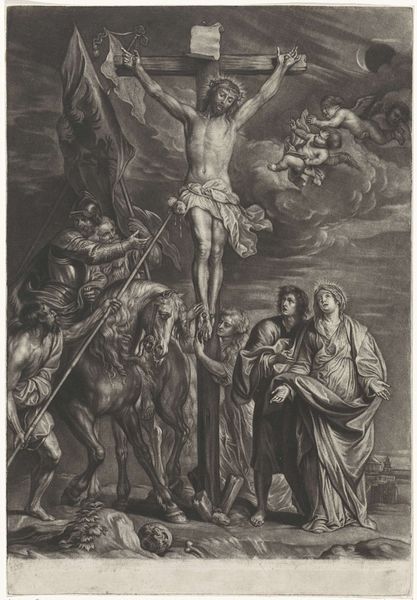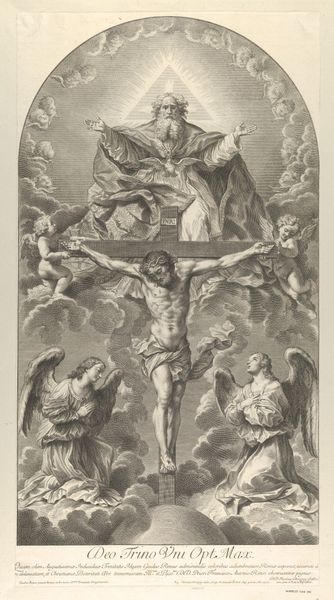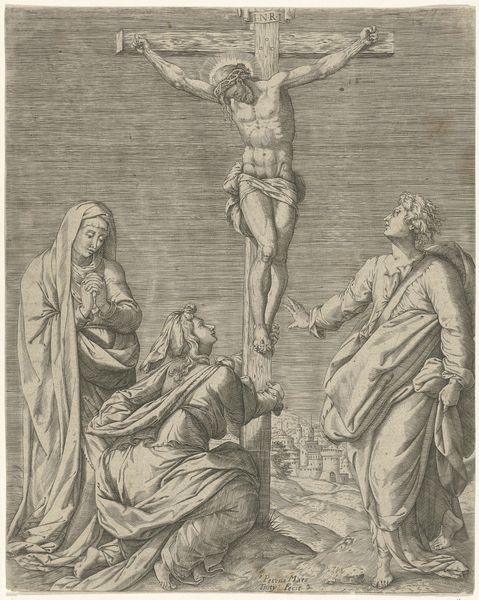
print, engraving
#
narrative-art
#
baroque
# print
#
old engraving style
#
figuration
#
history-painting
#
engraving
Dimensions: height 466 mm, width 341 mm
Copyright: Rijks Museum: Open Domain
Curator: Here we have a Baroque engraving, "Kruisiging van Christus, middendeel"—or, "Crucifixion of Christ, center panel"—created sometime between 1590 and 1632 by Pieter de Jode I. It's part of the Rijksmuseum's collection. The detail is remarkable. What are your first impressions? Editor: Intensely melancholic. The stark contrast of the black ink on paper amplifies the feeling of desolation. It's like looking at a memory, a haunting echo of immense suffering. Curator: Exactly. De Jode's choice of the engraving medium, with its precise lines, gives a meticulous rendering of the scene, almost forensic. But it's not just about the physical suffering, is it? There's so much symbolism layered in. Editor: Absolutely. We can see the religious historical context and how the act of salvation connects to the figure in the middle of the artwork. Beyond that, there's the depiction of women as these grieving witnesses, embodying a particular kind of sorrow and empathy historically projected onto them, and which demands more introspection. Curator: I agree. And look at the city in the background – almost a dreamscape, compared to the very immediate anguish in the foreground. It makes you wonder about the wider implications of what is unfolding. The chaos on earth and harmony promised in afterlife. Editor: And, let's consider the almost propagandistic function of such images in that era. This wasn't just art, it was a tool for the Church, visually reinforcing religious narratives but also a statement of power through the narrative's reach and emotional manipulation. Curator: The work becomes a powerful example of the Baroque style, doesn’t it? Emphasizing emotional impact, dynamic composition, even a sense of theatrical drama, to convey its message. Editor: In today's climate of political and social turbulence, and with religious extremism on the rise, such pieces remind us how important it is to separate compassion and justice from harmful ideologies. Curator: Precisely. It seems like a crucial and lasting legacy that this artwork, along with similar ones of that age, keep provoking a very valuable historical revision of events, places and figures. Editor: Indeed. Viewing it through a lens of awareness—historical, social, emotional—lets us engage in something profound, transcending centuries.
Comments
No comments
Be the first to comment and join the conversation on the ultimate creative platform.
